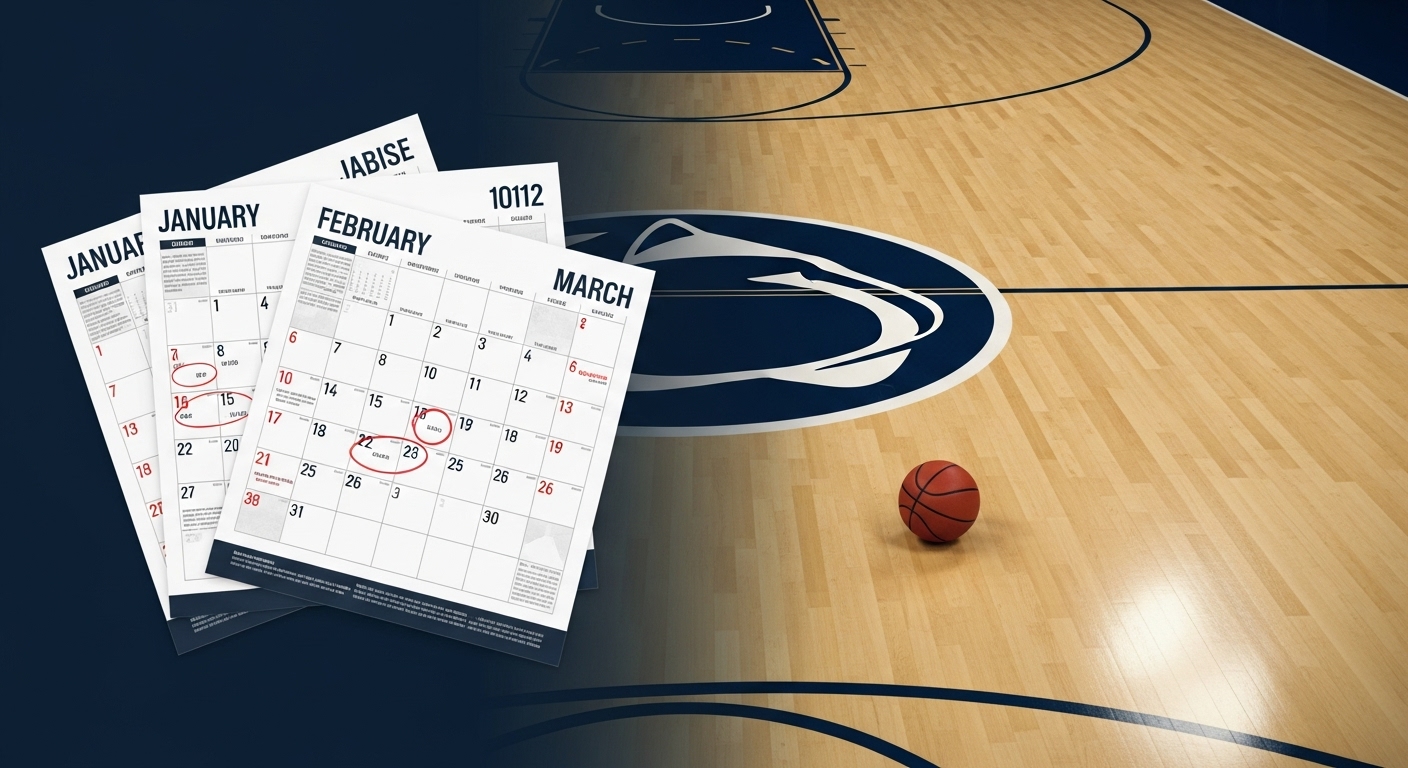As a coach-turned-golf-nerd who’s been teaching and writing for 12+ years, here’s my quick take: if you understand a few core golf terms—par, birdie, bogey, handicap—you can watch, play, and not get roasted by your buddies. I’ve seen people improve faster just by decoding the language.
So. Fast answers first. Par is the base score. One under par is a birdie. One over is a bogey. Your handicap lets different skill levels compete. Don’t touch sand before you hit. And if someone says “nice draw,” you didn’t win a raffle. Your ball curved (on purpose). That’s the gist.
The stuff people mess up (but won’t admit)
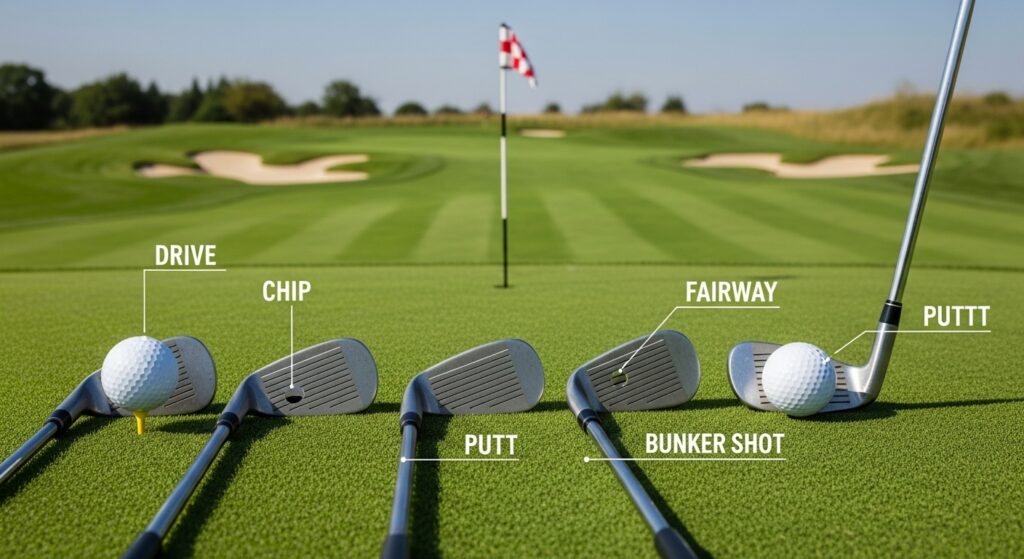
In my experience, the biggest confusion is scoring language. It sounds fancy. It’s not.
- Par: The expected number of strokes on a hole. Par 3, 4, 5. That’s it.
- Birdie: One under par. You’ll hear a lot of “shoulda been.” Sure it shoulda.
- Eagle: Two under. Party time. Try not to act shocked.
- Bogey: One over. Fine. Double bogey is two over. Not fine, but we’ve all been there.
- Snowman: An 8. It looks like a snowman on the card. Cute. Painful.
I’ve always found that having a simple reference helps. If you want to go deep, the golf glossary on Wikipedia is a surprisingly handy rabbit hole when you forget the difference between a fade and a slice.
How the scoring games actually work
There are a few ways we keep score, and yes, it matters.
- Stroke play: Every shot counts. Lowest total wins. Most common.
- Match play: Win holes, not totals. You can blow up one hole and still win the match. It’s beautiful.
- Stableford: Points for scores relative to par. Great for fun days and people who like math.
- Gross vs. Net: Gross is your real score. Net is after handicap. A 90 can beat an 82 if the 90 has more strokes to “spend.”
Quick table: Who says what, and when
| Term | What it really means | When you’ll hear it |
|---|---|---|
| Handicap Index | Your potential, not your average. Used to level matches. | Setting up a net game or league standings. |
| Stroke Play | Every shot counts to a total. | Most weekend rounds and pro tournaments. |
| Match Play | Hole-by-hole battles. | Ryder Cup vibes and grudge matches. |
| Cut Line | Score you need to keep playing after two rounds. | Pros sweating on Friday afternoons. |
| Penalty Area | Water or marked zones. You can play it or take relief with penalty. | Any time someone asks, “Is this red or yellow?” |
If you ever want to sanity-check a rule mid-round, the USGA Rules of Golf are the official source. Bookmark it. I have. Because I forget the dropping options for yellow vs. red penalty areas at least twice a month. Don’t judge me.
Where you are, and what to call it
I’ve taught juniors who call the fairway “the short grass road.” Honestly, not wrong. But here’s the map, simple.
- Tee box: Where you start. Don’t tee up in front of the markers. Ever.
- Fairway: The good grass. Aim for it. Then miss it anyway.
- Rough: Taller grass. Ball sits down and glares at you.
- Bunker: Sand trap. Don’t ground your club before you swing.
- Green: The putting surface. Use the putter. Resist the 8-iron chip “experiment.”
- Fringe/Apron: The collar around the green. Put or chip. Choose your chaos.
- Penalty Area: Water or marked zones. Know your drop options.
- Out of Bounds (OB): White stakes. Stroke-and-distance. Pain.
- Provisional Ball: Insurance shot if you think your first is lost or OB. Say it before you hit.
- Mulligan: Not a rule. A favor. Take it only if your group says so.
Ball flight trash talk, decoded
When I say “I’m playing a fade,” I mean the ball starts left, moves right (for a righty), on purpose. A slice is the ugly cousin—big curve, big trouble. Draw is right-to-left. Hook is the draw that went feral. Shank is… well, don’t say it on the tee. Bad karma.
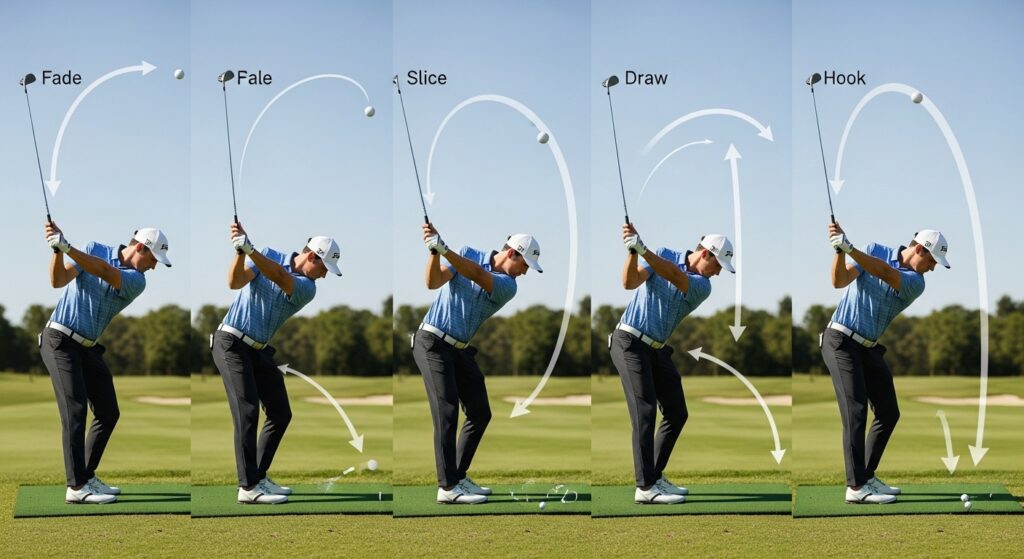
Wind, spin, and other excuses
I once spent a week at TPC San Antonio with a student who insisted “the wind took it” on every miss. Fine. But also, face angle. If you want a taste of how the pros handle breeze, look at the Valero Texas Open 2025 setup. That place is basically a lie detector for ball flight.
Events and formats you’ll hear on broadcasts
- Shotgun start: Everyone starts on different holes at the same time. Tournaments love it.
- Fourball vs. Foursomes: In fourball, you each play your ball, best score counts. In foursomes (alternate shot), you share one ball. Friendships have ended.
- Qualifier/Monday Q: Shoot a crazy number on Monday to get into the event. Pressure cooker.
- Playoff: Tied after regulation. Extra holes. Drama. Snacks.
For Charlotte folks, I’ve circled the Truist Championship 2025 guide because matchups and formats there spark great rules questions in my inbox. Always does.
Etiquette that keeps your group from hating you
- Ready golf: If you’re clear, hit. Don’t do a 10-step pre-shot routine when you’re 250 out with a 5-wood. We know it’s not reaching.
- Fix ball marks: Yours and one extra. Karma pays out on the next par 3.
- Rake bunkers: Leave it better than you found it. Yes, like camping.
- Silence on the swing: Even if you saw a hawk carry off someone’s hot dog. Wait five seconds.
On definitions, the R&A definitions are clear and short when you need exact wording. I check them when two players are arguing about “general area” vs. “abnormal course condition.” Fun car ride home, that one.
TV words vs. course words
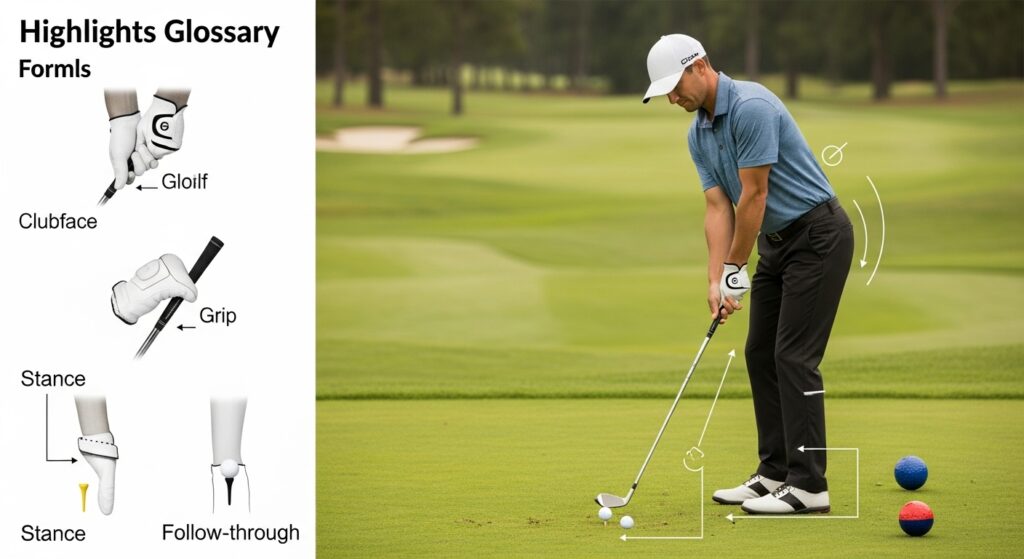
Commentators love phrases like “tight lie,” “short-sided,” and “two-way miss.” Here’s what they mean in plain talk: tight lie is little grass under the ball, short-sided means no green to work with between you and the hole, and a two-way miss means you’ve got both the lefts and the rights. It happens. Usually right after you start “swing thoughts.”
When I’m tracking what fans care about in real time, I skim sports trends pages because the same questions pop up: why did the player drop over there, what’s “relief without penalty,” and can you move a rock. The answers are in the rules, but examples help more than legalese.
Olympics and random schedule crossovers
Golf’s been in the Olympics recently, and I like pointing new fans to the basic sport page on Olympics.com because it lays out the format fast. Different stage, same par-birdie-bogey dance.
And when I’m juggling time zones and event windows, I still peek at things like the Paris 2024 gymnastics schedule. Wild connection, I know. But it keeps me honest about how broadcasts shift and why golf coverage sometimes overlaps or gets chopped up.
Common confusions that cost strokes
- Red vs. Yellow stakes: Both are penalty areas, but dropping options differ. Red gives you lateral relief. Yellow is stricter. People mix them up all the time.
- OB vs. Lost Ball: Either way it’s stroke-and-distance. Hit a provisional if you’re unsure. Saves that cart ride of shame.
- Grounding in a bunker: You can touch the sand in some spots now, but not to test conditions right behind your ball. Nuance matters.
- Nearest vs. Best relief: Nearest may not be nicer. It’s geometry, not convenience.
- Back-on-the-line relief: Pick a line from the hole through where it entered, go back on that line. Simple in theory. Chaotic with trees.
If you bounce between sports like me, I park updates on multi-sport news pages so I don’t miss rule tweaks. Golf changes quietly, then your buddy knows the new drop rule and you don’t. Awkward.
Mini guides inside the guide
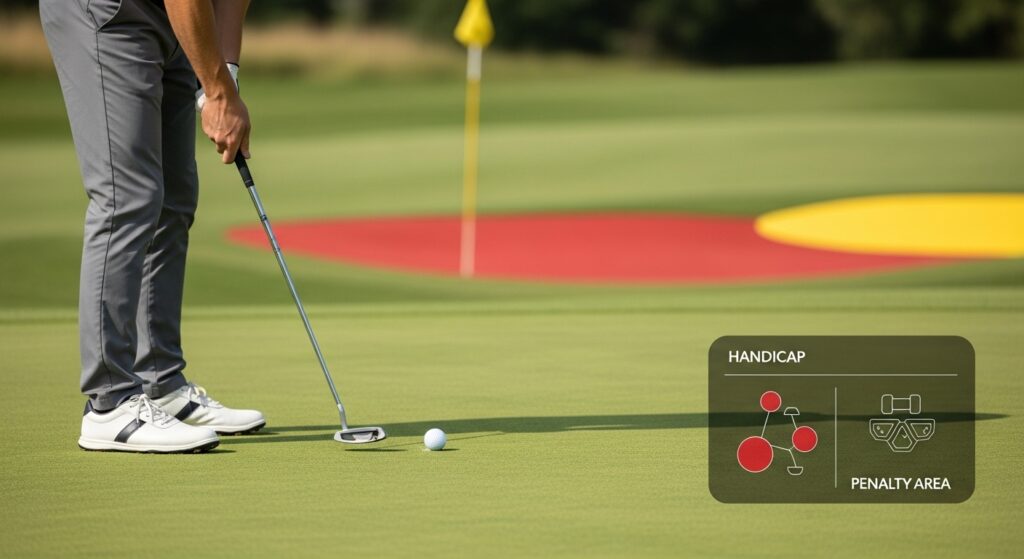
What is a “handicap,” really?
It’s a math model of your potential, not your average. Take your best rounds, adjust for course difficulty, get a number. Lower means better. When you and I play, strokes get allocated on the hardest holes first. Net scoring then levels the match. Fair-ish.
Penalty areas vs. hazards
We don’t say “hazards” in the rules anymore. It’s “penalty areas.” Red or yellow. You can sometimes play the ball in there. Most of us shouldn’t.
Drop like you mean it
Shoulder height is gone. It’s knee height now. If you forget and drop from the shoulder, just redo it properly. No extra penalty. Thankfully.
When to say nothing, just putt
If your partner is over the ball, don’t whisper “it breaks left.” If they wanted a read, they’d ask. I learned that the hard way. Twice.
Quick-hit table: speak like you play
| Phrase | Translation | Hidden meaning |
|---|---|---|
| “Nice lag” | Your long putt finished close. | Thank you for not three-putting. |
| “Up-and-down” | Chip/pitch and one putt to save par. | You got away with it. |
| “Short-sided” | Missed on the side with little green. | Good luck. Bring loft. |
| “Plugged lie” | Ball embedded, usually in soft sand. | The golf gods request a sacrifice. |
| “Two-way miss” | Ball can go left or right unpredictably. | Time for the driving range. Or prayers. |
I keep a mental list of core phrases for students, and I encourage a little DIY study with trusted sources like Britannica’s golf overview when they want history plus basics in one sitting. Clean and digestible.
If you’ve made it this far, you can probably decode most golf terms you’ll hear on TV or the first tee. Honestly, language becomes your cheat code. Once you know the words, you see the course better. You choose smarter shots. And you talk a better game, which, let’s be real, is half the fun.
FAQs
What’s the fastest way to learn the basic lingo before my first round?
Memorize par, birdie, bogey, and how handicaps work. Then learn tee, fairway, rough, bunker, green. That covers 80% of what you’ll hear.
Is a slice always bad and a draw always good?
Nope. A controlled fade or draw is great. A slice or hook is just the out-of-control version. Intent matters.
What’s the deal with red vs. yellow stakes?
Both are penalty areas. Red usually allows lateral relief. Yellow is stricter—back-on-the-line relief only. Check the local rules if confused.
Can I take a mulligan?
Not in real rules. In casual rounds, only if your group agrees. Don’t brag about your “par” after using one.
What should I read if I want the official stuff without the fluff?
The USGA and R&A rule hubs are best. I also like the quick glossary pages for lookups mid-round. Keeps the debates short.
Anyway, that’s my rant for today. Next time I’ll tell you why “maximize lag putting” is code for “stop trying to be a hero from 60 feet”… and other lessons I learned the hard way. And yeah, I used the phrase golf terms twice. Maybe three if you count this one. Whatever. See you out there.

I’m Oliver Scott, and I live to bring every sports moment to life. Get breaking multi-sport news, in-depth match highlights, fantasy tips, athlete spotlights, and the latest trends right here.




